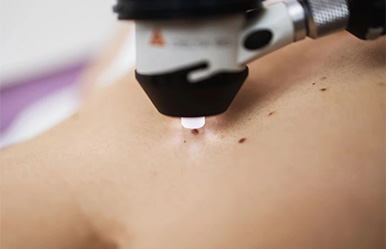Keep Fighting Sports Injuries After 40
2020-12-23

Zumba and racquet sports are great ways to keep fit in your prime. But doing it wrong can lead to injuries.
If you’re above 40, Zumba and racquet sports are great ways to keep active. These activities provide immense health benefits, from maintaining higher metabolism rates and preventing age-related weight gain to reducing your risk of diabetes, heart disease and cancer. The downside? The risk of getting injured during intense exercise increases as you age. The older you are, the longer you’ll have to wait for injuries to completely heal.
Zumba and racquet games aren’t exactly a walk in the park. If you enjoy these adrenaline-pumping activities, the best way to ensure you can keep doing them is to know the common injuries related with each activity – and how to prevent them.
ZUMBA

This dance-fitness workout packs so much fun into exercise that it’s still popular among all age groups. However, a US study of Zumba participants (whose average age was 44 years old) found that 1 in 4 of them sustained injuries, regardless of their amount of experience in the workout.
Here are some common Zumba-related injuries and how to avoid them.
Ankle Sprains
Zumba is based on dance moves that require a lot of side-to-side movements, twisting, turning and sliding. This increases your chances of accidentally spraining/twisting your ankle. Most participants attending Zumba classes also wear running shoes designed for forward movements. These shoes tend to lack adequate ankle support and further increases your chances of injury.
Prevention
- Wearing dance or basketball shoes are highly recommended during Zumba workouts. These shoes are designed for multi-directional movements and provide ankle support.
- Another option are ankle braces or even taping the ankles (lightly), especially if you have a history of ankle injuries and might have some instability in the ankles.
Kneecap Pain
This is a common complaint for beginners and it usually happens when your knees and muscles are not strong enough yet to withstand the impact forces from Zumba (or jogging/jumping movements). It’s generally caused by too much stress on the cartilage behind your kneecaps (patellae).
Prevention
- Always wear the right shoes (e.g. dance or basketball shoes).
- Try to dance on hardwood floors (found in dance studios) as they provide shock absorption. Dancing on makeshift Zumba spaces, such as concrete floors in shopping malls and office buildings, can sometimes add more stress to your joints in general.
- Perform weight-training exercises to strengthen your legs, especially the quadriceps or thigh muscle. Simple movements and exercises like mini lunges, and mini squats can be helpful.
RACQUET SPORTS

Badminton, tennis and squash are popular sports and gaining in popularity in Asia. Although they aren’t known to cause as many injures as contact sports, they can still be dangerous if you’re older.
Here are 3 common injuries and how to avoid them!
Frozen shoulder
If you repeatedly deliver overhead shots, there’s a high chance you’ll be feeling pain and stiffness in your shoulder joint. This is caused by putting consistent stress on the joint, which may lead to thickening and inflammation of the connective tissue that surrounds the joint.
Prevention
- This injury often occurs spontaneously without a clear cause. The most important thing is to warm up properly and slowly ease into the sport over a few weeks especially if you are new to the game. Strengthening your rotator cuff muscles using light resistance bands is also very helpful.
- If you have a shoulder injury, allow your shoulder to recover completely before taking up the sport again.
Tennis elbow
Despite its common name, this injury doesn’t only affect tennis players but most people who frequently play racquet sports. The pain associated with a tennis elbow is caused by an inflammation of the tendons that attached to the bony, exterior part of the elbow. A UK study found that age (over 35), frequency of playing (3 of more times a week), and racquet grip are all contributing factors to the injury.
Prevention
- The best prevention is getting professional advice on choosing the right racquet, the proper grip, and the correct hitting technique. Getting these details right will place less stress on your elbow and avoid injury.
- Frequently perform exercises such as the tennis ball squeeze-and-release, wrist flexion stretch and wrist rolls, to strengthen your forearm and improve the flexibility in your wrists.
Kneecap pain
The sudden movements and rapid change of direction required in racquet sports place great stress on your knees. These can cause a range of knee injuries, including patellar tendonitis (jumper’s knee), and kneecap irritation.
Prevention
- Besides strengthening the muscles in your lower limbs and performing cross-training to improve your agility and flexibility, pay attention to your footwear. Proper court shoes are sturdier, with good shock absorption as well as strong support for your feet and ankles.
- Avoid wearing running shoes to play racquet games as they are designed for forward motion and don’t provide much foot protection for side-to-side movements.
- If your pain persists for a prolonged period of time, it may be wise to consult a specialist to find out the exact cause of your pain and how to treat it properly.
Copyright: Health Plus an online health and wellness web resource developed by Parkway Singapore https://www.mountelizabeth.com.sg/healthplus/article/sports-injuries-after-40
References:
1. Avitzur, O. (2012, July). 10 ways to avoid Zumba injuries. Consumer Reports. Retrieved from https://www.consumerreports.org/cro/2012/07/10-ways-to-avoid-zumba-injuries/index.htm
2. Beware: Zumba injuries on the rise. (2015, 10 July). Shape. Retrieved from https://www.shape.com.sg/fitness/beware-zumba-injuries-rise/
3. Brown, J. (2009, May 7). How to avoid and treat tennis elbow. Exos Knowledge. Retrieved from http://www.coreperformance.com/knowledge/injury-pain/tennis-elbow.html
4. Fortin, J. (2008, December 9). Zumba zooms to the top of the exercise world. CNN. Retrieved from http://edition.cnn.com/2008/HEALTH/diet.fitness/09/22/hm.zumba.dance.exercise/index.html
5. Inouye, J., Nichols, A., Maskarinec, G., & Tseng, C.-W. (2013). A Survey of Musculoskeletal Injuries Associated with Zumba. Hawaii Journal of Medicine & Public Health, 72(12), 433–436.
6. Marketing Insights and Consumer Analytics. (2016). Sports index participation trends 2015. Sport Singapore. Retrieved from https://www.sportsingapore.gov.sg/about-us/sports-particpation-in-singapore
7. Nayyar, N. (2017, September 7). Tips to avoid Zumba-related injuries. Women Fitness. Retrieved from https://www.womenfitness.net/avoid-zumba-related-injuries/
8. Pluim, B. M., Staal, J. B., Windler, G. E., & Jayanthi, N. (2006). Tennis injuries: occurrence, aetiology, and prevention. British Journal of Sports Medicine, 40(5), 415–423. http://doi.org/10.1136/bjsm.2005.023184
9. Ruotolo, C. (2016, September 15). Tennis injury prevention: Understanding frozen shoulder syndrome – adhesive capsulitis. Long Island Tennis Magazine. Retrieved from https://longislandtennismagazine.com/article8829/tennis-injury-prevention-understanding-frozen-shoulder-syndrome%E2%80%93adhesive-capsulitis





























